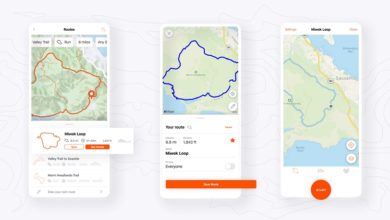What makes iPhone sell in millions every quarter?
Every time a new iPhone is announced, the internet goes crazy. While Apple customers act as if they had seen God’s ultimate weapon, others start finding out what Apple copied from competition. Almost every one of these non-Apple enthusiasts end up with statement ‘no one will buy this phone’. But still, at the end of the year, the iPhone remains the ‘phone to beat’ and is then compared in slides at product presentations (of Apple’s competitors), handful of Chinese brands release iPhone clones. What is it that iPhone has that other phones does not have? Is the iPhone at an entirely different level? Is the iPhone best VFM phone? Read On to know!
Created by a man with a vision and clarity
Steve Jobs closely monitored the project to create a smartphone. When you have Steve Jobs working closely with the design teams, you can be assured that attention to detail is un-matched. Ease of use was a top priority for Steve Jobs. In fact, from the moment Steve Jobs took over Apple, their products had very high ‘ease of use’ factor. Apple, under Steve Jobs not only created a revolutionary mobile phone, they created an ecosystem that bonds tightly with the iPhone.
The decision to make iPhone was not sudden and Apple did not create iPhone in a month. It all started with Apple iPod, iTunes, iTunes music store etc. A strong base (user base and ecosystem base) was created before Apple announced the iPhone. When Apple announced the iPhone, the timing was perfect. Yes, it missed some major features (no video calling, no 3G, cannot change ringtone, heavily restricted access to data etc). The superior ‘UI experience’ made it a runaway hit.
Before iPhone, applications were downloaded from various sites and installed on smart phones (just like how it was on Windows OS). The addition of one stop app store (that also helped developers get solid revenue and recognition for their hard work) was perfect strategy to win customers and developers. Arm twisting the carriers to make sure that they do not block critical OS updates (for iOS) turned out to be a master stroke.
High Price and brand value -> Status Symbol
In countries like India, if you want to buy the current model of iPhone, you have to shell out atleast 60,000/- and thats a lot of money. This means that those who can afford to buy the iPhone go to great lengths to flaunt it, to show it off. When I got the iPhone, I stayed away from flaunting it. Yet, those who recognized the phone were saying ‘can I see it just one’, ‘you are so rich, you got an iPhone’, ‘what? you paid so much for a phone?’.
This kind of behavior from those around iPhone users make them feel proud, feel ‘elite’. When you get such feeling from owning a product, you tend to go for it (not talking about enthusiasts or those who use iPhone for what it has).
Mass hysteria around launch
Brands like Lenovo, ASUS, HTC have to promote their phones a lot. By ‘a lot’, I mean ‘A LOT’, pouring great deal of time and money to make the product visible to mainstream users. With Apple products, there is so much of discussion online and offline that even the anti-fanboys create extreme amount of buzz around the launch. This creates huge interest among mass public. Most of the users go to mainstream media sites to see what the fuzz is about and the mainstream media (most of the times) sugar coats the news. In the end, however minor the changes are, the product gets immense coverage and generates lot of interest among public.
If you see the product launch events (especially from Asian brands), there will be atleast one slide comparing the phone with the Apple iPhone. Newspaper ads also show similar comparison. All these brands are not only promoting their own products, they are showing iPhone as the benchmark phone. This is being etched into our brains and the moment we have money to buy the iPhone, we jump in without second thoughts.
Once you are in, it is very hard to get out
Ask any Macbook or iPhone user what their next computer or phone would be. Majority of them would say that they will stick to the same brand and they use the devices for a long time We often see Macbook users say that they have used the Macbook for half a decade before upgrading without any problems. There are better products but the ecosystem is ‘almost’ perfect. We all tend to purchase lot of apps over time. It is not easy for anyone to discard these applications and move to another ecosystem. With last two versions of iOS and OS X, Apple has started working on binding these two with features like Handoff, iCloud sharing etc. Now, it is even harder to get out as you have to sacrificed these features if you move to non-iOS phone or Windows computer.
More money for partners
You would rarely see an Android user paying premium price for accessories. A microUSB cable typically costs under 500/- rupees while iPhone user need to pay 1,500/- for Thunderbird cable. The same applies to accessories like tempered glass, phone cases, audio products etc. The ecosystem is paying more for accessory makers, users are ready to pay extra. This results in accessory makers giving this a priority. Almost every ‘quality’ accessory maker will have big list of accessories for Apple products. Again, given the limited number of models, its easier for accessory makers to concentrate on Apple. The number of Android devices vs number of iOS devices is another factor why accessory makers work faster around iOS devices.
There are some things that Apple does/follows that Apple does that keeps iOS the preferred choice for users and developers.
Here are a few:
Strong bond between software and hardware
Apple never licenses their OSes for other OEMs. They believe that ‘everything in-house’ is the best way forward. This shows in the end product. Android on the other hand is heavily modified by most OEMs to a point that it becomes a heavily un-optimized, with redundant applications. Carriers add even more bloatware to every Android phone. All this results in OS getting slower and slower after few days/weeks. Unfortunately, the only way forward for Android is to add more CPU cores, GPU power and truckload of RAM. Soon, Android phones will have same amount of RAM that top of the line MacBooks and Laptops come with.
Keeping developers happy
A developer can create higher quality applications if he/she knows everything about the device that the app is supposed to run. Unlike Android devs, iOS developers have to work on optimizing the code for very limited number of phones/tablets. This resulted in iOS applications being better than Android applications in quality. These apps not only run smoother, they take less battery and system resources. According to application developers, iOS app development is easier and faster when compared to app development in Android. Fragmentation and vast device types in Android makes it much harder to develop and build apps.
Infinum analyzed app development and came out with stat that it costs 30% more to develop application for Android.
iOS developers earn more ‘per app’ than Android developers. When you have more money coming from one OS, you tend to concentre more. Developer makes sure that the application is regularly updated (with new features). This help in generating health and high revenue stream. Even though Android apps are downloaded by far greater number of users, the revenue generated by iOS applications is far higher. More paid apps, higher application pricing, more users willing to pay for applications in iOS being some of the reasons.
Staying away from temptation to bloat the OS with features
While Microsoft destroyed Windows Phone OS by trying to doing a reset too often. Windows 6 Mobile phones did not get W7. W7 phones did not get W8. W8 phones struggled to run W10. Apple on the other hands made sure that iPhones can run two major updates of the OS without showing lag. Some iOS sers want Android like home screen (with widgets), Android like app-sharing and customization for iOS. Apple did not budge. I feel that Apple took right decision, by looking at the state of Android now. Too much of ‘core functionality’ changes would’ve created issues like app incompatiblity, bloatware, redundancy etc.
Apple took their own time to implement features that were in Android for a while. For most of these features, Apple’s implementation turned out to be simpler and superior to that of competition. Apple has set expectations very clear. There will be subtle increments to the OS and hardware.
Take my example
The Mac Mini I have is 2012 model and I wanted to go with a laptop now but given the high price of a Macbook made me wait. I have to shell out 1.2 lac rupees to get the macbook that would suit me. I do not want to get a Windows notebook by paying a third the price as I lose the bond between the phone and computer. So, I would rather wait and get a new Macbook (after saving some money) than moving out. For the time being, I installed SSD and extra RAM in my Mac Mini so that it can run for another year or two at least. Coming to phone, I used to change my phone every year (as the phone starts to lag or updates would stall). My iPhone 6 is more than a year old and I am still happy. I have no interest in changing my phone till 2017 December at least. There are more ‘technical’ reasons that makes iOS and iPhone tick. But adding all those will make this post too long and complex. Do let us know your views on this topic.




